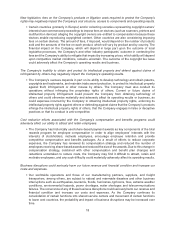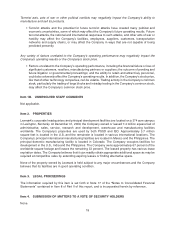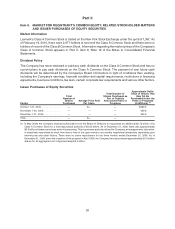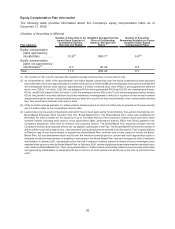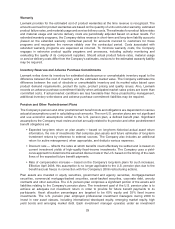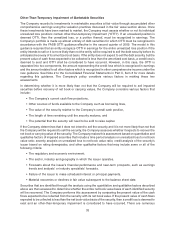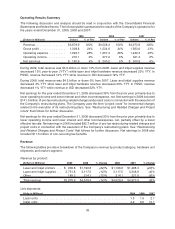Lexmark 2009 Annual Report Download - page 34
Download and view the complete annual report
Please find page 34 of the 2009 Lexmark annual report below. You can navigate through the pages in the report by either clicking on the pages listed below, or by using the keyword search tool below to find specific information within the annual report.special pricing agreements, promotions and other volume-based incentives. Estimated reductions in
revenue are based upon historical trends and other known factors at the time of sale. Lexmark also records
estimated reductions to revenue for price protection, which it provides to substantially all of its distributor
and reseller customers. The amount of price protection is limited based on the amount of dealers’ and
resellers’ inventory on hand (including in-transit inventory) as of the date of the price change. If market
conditions were to decline, Lexmark may take actions to increase customer incentive offerings or reduce
prices, possibly resulting in an incremental reduction of revenue at the time the incentive is offered.
The Company also records estimated reductions to revenue at the time of sale related to its customers’
right to return product. Estimated reductions in revenue are based upon historical trends of actual product
returns as well as the Company’s assessment of its products in the channel. Provisions for specific returns
from large customers are also recorded as necessary.
Allowances for Doubtful Accounts
Lexmark maintains allowances for doubtful accounts for estimated losses resulting from the inability of its
customers to make required payments. The Company estimates the allowance for doubtful accounts
based on a variety of factors including the length of time receivables are past due, the financial health of its
customers, unusual macroeconomic conditions and historical experience. If the financial condition of its
customers deteriorates or other circumstances occur that result in an impairment of customers’ ability to
make payments, the Company records additional allowances as needed.
Restructuring
Lexmark records a liability for a cost associated with an exit or disposal activity at its fair value in the period
in which the liability is incurred, except for liabilities for certain employee termination benefit charges that
are accrued over time. Employee termination benefits associated with an exit or disposal activity are
accrued when the obligation is probable and estimable as a postemployment benefit obligation when local
statutory requirements stipulate minimum involuntary termination benefits or, in the absence of local
statutory requirements, termination benefits to be provided are similar to benefits provided in prior
restructuring activities. Employee termination benefits accrued as probable and estimable often
require judgment by the Company’s management as to the number of employees being separated and
the related salary levels, length of employment with the Company and various other factors related to the
separated employees that could affect the amount of employee termination benefits being accrued. Such
estimates could change in the future as actual data regarding separated employees becomes available.
Specifically for termination benefits under a one-time benefit arrangement, the timing of recognition and
related measurement of a liability depends on whether employees are required to render service until they
are terminated in order to receive the termination benefits and, if so, whether employees will be retained to
render service beyond a minimum retention period. For employees who are not required to render service
until they are terminated in order to receive the termination benefits or employees who will not provide
service beyond the minimum retention period, the Company records a liability for the termination benefits
at the communication date. If employees are required to render service until they are terminated in order to
receive the termination benefits and will be retained to render service beyond the minimum retention
period, the Company measures the liability for termination benefits at the communication date and
recognizes the expense and liability ratably over the future service period.
For contract termination costs, Lexmark records a liability for costs to terminate a contract before the end of
its term when the Company terminates the agreement in accordance with the contract terms or when the
Company ceases using the rights conveyed by the contract. The liability is recorded at fair value in the
period in which it is incurred, taking into account the effect of estimated sublease rentals that could be
reasonably obtained which may be different than company-specific intentions.
28


